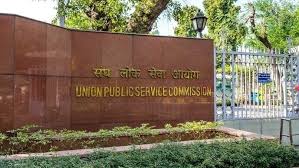UPSC’s initiative to provide employment pathways for unsuccessful candidates is welcome
Every year, lakhs of people prepare for and sit the Civil Services (Preliminary) Examination. In 2024, for instance, 9.9 lakh had applied for the examination conducted on June 16. Of these, 5.8 lakh appeared for the examination. However, of all those who appeared, only 14,627 candidates qualified for the written (main) examination, of which just 1,009 were recommended by the Union Public Service Commission (UPSC) for appointment to the services. The lakhs who don’t make the list each year either opt for another attempt — in the general category, candidates have six attempts — or start their professional life, often belatedly. There are several challenges posed by a late entry into the job market. Some of the candidates have competition from younger counterparts and the lack of work experience makes their predicament even more difficult. The spin-offs on lifetime earnings are not difficult to gauge, especially because many end up employed in occupations that are either not in line with their qualifications or possibly at junior levels. An initiative by the UPSC is now providing pathways to the unsuccessful candidates for securing gainful employment.
Under the Public Disclosure Scheme, called PRATIBHA Setu now, the Commission has started publicly disclosing information on the non-recommended, willing candidates of the exams it conducts. The UPSC conducts several exams every year — some of the examinations, other than the Civil Services Examination, included under this scheme are the Indian Forest Service Examination, the Indian Economic Service/Indian Statistical Service Examination, and the Combined Medical Services Examination. The non-recommended candidates are those “who qualify the written examinations but are not recommended after the interview”. The portal provides information on these candidates. According to a report in this newspaper, it also provides subject- and discipline-wise search facilities to organisations, enabling them to pick out candidates who meet their requirements. By doing so, this facility is helping match candidates available in the labour market with prospective employers.
Initially, this scheme — it was launched in 2018 — had little success in placing candidates in government organisations and public sector entities, as per a report in this paper. Extending it now to the private sector helps cast a wider net, increasing the odds of the candidates being absorbed. Prospective employers now include PSUs, autonomous government organisations and private entities. This is indeed a welcome step. However, the problems in the labour markets in India require deeper and far-reaching policy changes.
